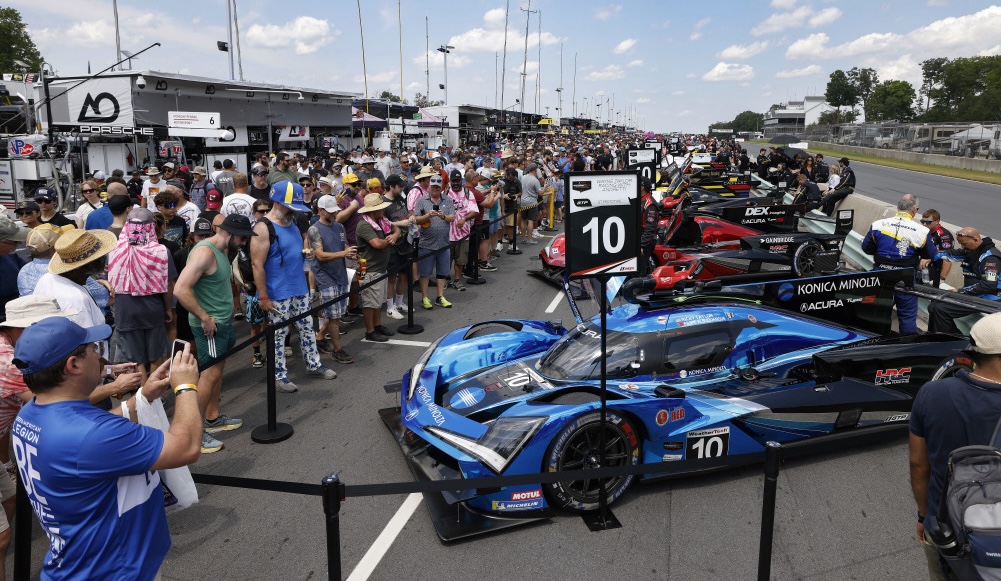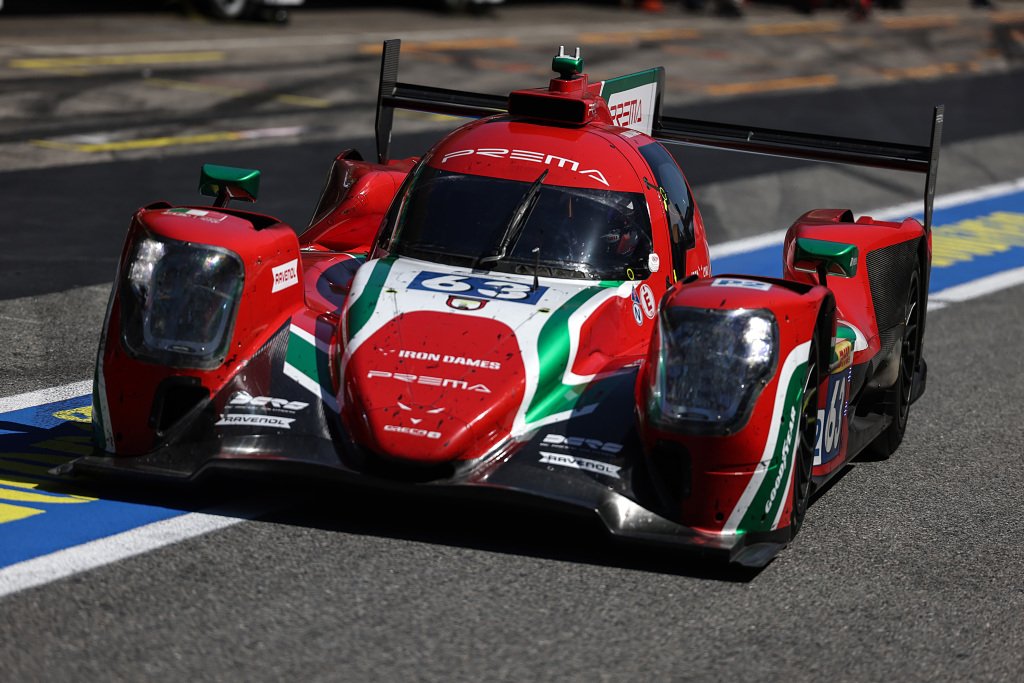Sitting in the press conference room at Daytona back in January of 2020, when IMSA and the ACO first revealed the global LMDh concept, paving the way for the “convergence” of the WeatherTech SportsCar Championship and FIA World Endurance Championship’s top categories, it was hard to imagine how it would play out. It all sounded great, but would it work?
That day, senior representatives from the sport’s governing bodies and manufacturers described the LMDh reveal as a “game changer,” “a sensible approach,” “enormous,” “huge” and “historic.” Yet nobody truly knew where things would lead, or whether manufacturers would come in numbers when when the ruleset debuted globally.
Fast forward four years and we have a growing IMSA GTP field that will feature six factories next year and a WEC Hypercar grid with almost 20 full-season cars from nine manufacturers. It’s taken off and the task at hand is now very different.
Before, the focus of the rule-makers was to build the grids, attract new manufacturers and encourage investment for the future. Now, it’s about sustaining what we have and building an audience for on-track products that have never looked better.
Looking specifically at IMSA, it’s fair to say that within the castle walls the level of growth that the WeatherTech Championship is experiencing is currently exceeding all expectations. IMSA President John Doonan is buoyed by recent progress, yet remains far from complacent.
This astonishing era of convergence in sports car racing is peaking, and fast. Crowds are attending races in record numbers on almost a weekly basis and broadcast viewing figures are on an upward curve globally.
But Doonan knows as well as anyone that it can all change in a heartbeat. This is an area of motorsport which is cyclical by nature, with manufacturers coming and going as rulesets evolve. Right now we are in the midst of an era that will be looked back on fondly for decades to come, yet champagne celebrations are not a weekly feature at head offices. Nobody at IMSA is under the illusion that it will last forever.
As a result, the hard work hasn’t stopped and is ongoing behind the scenes to build the audience for IMSA’s WeatherTech Championship and its support series. The foundations are important — they need to be as strong as possible so any and all future storms can be weathered.

A great example of IMSA’s forward thinking came back in March, when it began streaming races for free on YouTube at Sebring for fans outside the U.S. IMSA didn’t promote this addition to its broadcast offering that week; instead, it was a soft launch. The powers that be wanted to see what would happen if broadcasts were placed on its channel — which has a following of more than 350,000 people and potential for growth via “the algorithm” — with no promotion.
It was, quite literally, an overnight success. The live race broadcast for the 12 Hours now sits on the IMSA Channel with 542 thousand views and prompted the decision to add YouTube as a permanent home for race broadcasts alongside its desktop platform and app.
With moves like this, IMSA is seizing the moment. The WeatherTech Championship may be based in the U.S. (with the exception of the annual race at Canadian Tire Motorsport Park), but the “I” in IMSA stands for “International” and as time goes on, growing and servicing the championship’s global fan base is becoming more of a priority.
“With convergence, sports car racing is in the spotlight more than at any point we’ve seen in our careers,” Doonan explains to RACER. “When we moved to YouTube at Sebring, for the oldest endurance race in America, we had about 500,000 viewers live at the peak during that broadcast. We had high hopes, but that was beyond what we thought was possible.
“The North American market is incredibly important to our OEMs, our drivers, and our partners. IMSA is the largest ‘international’ racing series in North America. Those two points, coupled with the fact that we have 18 manufacturers choosing to compete with us and dozens of drivers from all around the world on our grid, means that getting our IMSA product and broadcasts in front of a growing international audience is incredibly important.”

Post-Sebring, the data has continued to provide encouraging signs. The audience outside the USA didn’t just tune in for the race with the highest profile and bolt. Instead, Doonan revealed, fans have stayed put, making for a remarkable statistical jump year on year.
“We had 4.3 million hours watched on YouTube in 2023, and through the year to date so far we’ve had 15 million hours watched. It’s a special opportunity for us and we’re really happy,” he says. “It’s making our manufacturers and partners happy too. The North American market has been named by almost every single manufacturer as the most important market for them when it comes to growing a brand.
“But with 18 manufacturers, their global headquarters may not be in the USA — they may be elsewhere. So, giving their executive teams — and people in the boardroom who agree racing is a proper marketing tool and an R&D tool — an easy way to view the races and see their return on investment is critical.
“Alpine (a target for IMSA in GTP going forward) is a tremendous example. They want to come to the U.S. and sell road cars. If you bring the racing program as part of the brand launch, it’s an authentic way to launch a brand. To do that you need lots of elements, retail locations and a distribution network, but you need awareness more than anything else. What better way to get that than via showing the public what you can do on track?”










